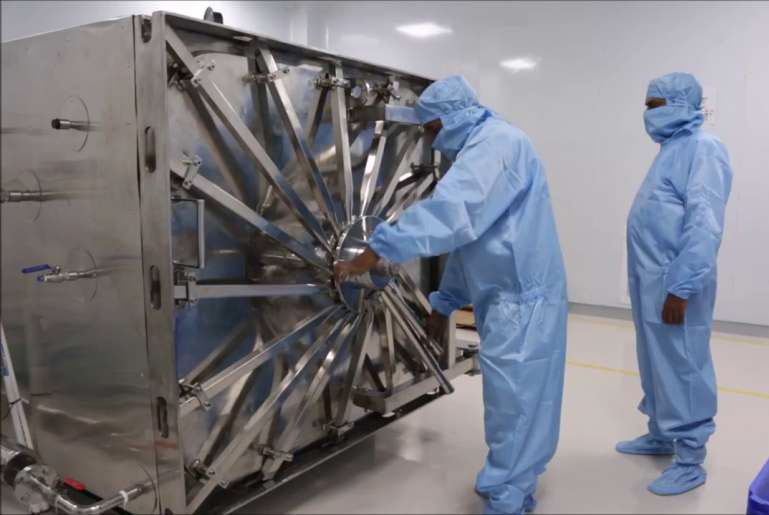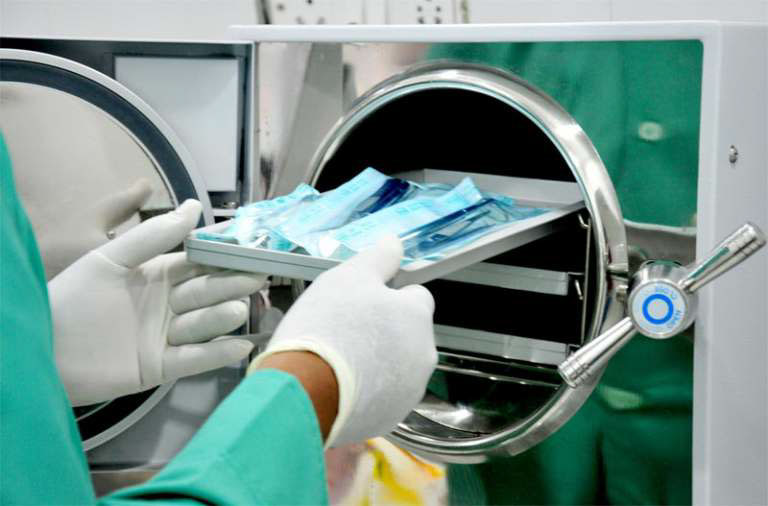|
Sterilization
Technologies For Medical Plastic Products And Devices
All materials used in medical devices,
including the plastics used in them, are essential to be
capable of being sterilized without loss of performance.
Sterilization can be defined as the
removal or destruction of all living organisms,
including resistant forms such as bacterial or fungal
spores. Bacterial spores are most resistant to
destruction, and if the sterilization is effective in
eliminating them then it can generally be assumed that
all other pathogenic and nonpathogenic organisms have
been destroyed. It is important to reduce or eliminate
the bioburden of certain medical devices and the
materials used in their manufacture before end use.
Bio-burden is the concentration or the
number of microorganisms like pyrogens, viruses, molds,
and fungi present in or on a material. Pyrogens are
substances that can cause a fever. There are various
tests that can detect the number and kinds of
micro-organisms including pyrogens and remnants of
bacteria. A product may be sterile but it still may
contain pyrogens. Use of high temperatures or radiation
will typically kill pyrogens. It is important to realize
that production in a ‘‘clean room’’ does not make a
device sterile; it simply reduces the initial bioburden
and concentration of foreign particles in or on the
material to make sterilization more effective.
Cleanliness does not mean sterile.
A comparative analysis for various
sterilizations methods is given in the following table :
Comparison of Common Sterilization
Methods
| Sterilization Characteristic |
Steam |
Dry heat |
Ethylene oxide (EtO) |
Gamma radiation |
Electron beam (e-beam) |
| Process type |
Batch |
Batch |
Batch |
Batch |
Continuous |
| Post-sterilization testing for
Sterility Assurance Level (SAL) |
Parametric release; biological
indicators |
Parametric release; biological
indicators |
Parametric release; biological
indicators |
Dosimetric release |
Dosimetric release |
| Post-sterilization treatment |
Need to dry the product |
None |
Need to aerate product to remove
residues |
None |
None |
| Penetration |
Requires vapor permeable packaging.
Surface penetration |
Good penetration |
Requires gas-permeable packaging; high
pressure, temperatures for improved penetration |
Excellent penetration |
Near complete penetration, need
dosimeters; low penetration in high- density materials |
| Safety |
Almost no safety concerns |
Almost no safety concerns |
Considered a mutagen/ carcinogen; need
to remove residual absorbed EtO |
Minimal concern; environmentally safe;
non-toxic (need protection from radiation) |
Almost no safety Concerns |
| Reliability |
Excellent |
Good |
Good |
Excellent |
Excellent |
| Turnaround time |
Slow |
Slow |
Slow |
Fast |
Fast |
| Process Parameter Controls |
Temperature, pressure, vacuum,
relative humidity, time |
Temperature, pressure, vacuum, time |
Temperature, pressure, vacuum,
relative humidity, gas conc., time |
Time |
Time |
| Material constraints |
Heat resistant and hydrolysis
resistant materials only |
Heat-resistant materials only |
Polymers that do not absorb or degrade
with EtO |
Radiation stable polymers; complex
parts and kits not effectively sterilized |
e-Beam stable polymers; low- density
materials only |
| Relative cost |
Inexpensive |
Relatively inexpensive |
High capital investment |
High capital investment |
High capital investment |
| Advantages |
Simple process, widely used, excellent
for reusable devices, excellent for heat- stable
liquids |
Relatively simple process |
Well characterized, good for kits,
combination products, parametric release |
Simple, fast, excellent penetration,
dose uniformity |
Simple, fast, less material
degradation |
| Disadvantages |
Comparatively high temperatures,
generally not appropriate for single-use devices and
large lots |
High temperatures, limited use |
Relatively complex process; some
limits to penetration; need to remove EtO residuals |
Limited applicability to kits and
complex designs/ products; no drug/ combination
products; material degradation |
Limited penetration, poor on
high-density products, dosimetric release is not very
uniform, affected by part configuration |
Sterilization procedure includes always some
disadvantages due to the simple fact that there is a
certain amount of energy necessary to destroy living
germs, even those, which are specialized on harsh living
conditions. On the other hand, a sterilization procedure
should be as fast and reliable as possible and has no
impact on plastic materials as well. The various
sterilization technologies in use by industry includes:

• Steam sterilization
• Dry Heat Sterilization
• Ethylene Oxide ( EtO ) Steriization
• Gamma Radiation Sterilization
• Electron-beam sterilization

A vast majority of plastic medical devices, which are
applied sterile, are sterilized by γ-radiation or
ethylene-oxide, especially almost all single-use
devices. γ-radiation may be preferred due to its faster
and less restrictive sterilization procedure regarding
the actual geometry and shape of the device, however, it
may cause more aging damage to the chemical structure of
the plastics.
The following table gives overview on radiation
stability of various Plastics.
Radiation Stability of Various Plastics
| Polymer |
Comment |
| Polyolefins |
Polyethylene can cross-link.
Polypropylene is especially susceptible to degradation
and discoloration. Stabilized polypropylene and
polypropylene copolymer grades are good |
| PVC |
Susceptible to degradation and color
change. Tint- based, stabilizers are incorporated into
PVC to prevent discoloration and degradation |
| Acrylics |
Must be stabilized to prevent
degradation and color change |
| Polycarbonates |
Must be stabilized to prevent
degradation and color change |
| Polyurethanes |
Some discoloration that reverses over
time |
| Acetals |
Typically not used for gamma
sterilization |
| Polyamides |
Polyamides containing aromatic rings
are good Polyamides 10, 12, 6/10, and 6/12 are good |
| Polyester |
Aromatic polyesters are radiation
stable |
| High-temperature thermoplastics |
PEK, PEEK, PEI, Polysulfones – Good |
| Fluoropolymers |
Teflon embrittles when exposed to gamma
radiation. Teflon and FEP must be stabilized. All other
fluoropolymers are stable to gamma radiation |
| Elastomers |
Generally stable to gamma and e-beam
radiation |
| Thermosets |
Thermosets typically are radiation
stable |
References :
01 - “Emerging Trends in Medical Plastic Engineering and
Manufacturing” By : Markus Schonberger and Marc
Hoffstetter
02 - “Plastics In Medical Devices” By : Vinny R Sastri
|
